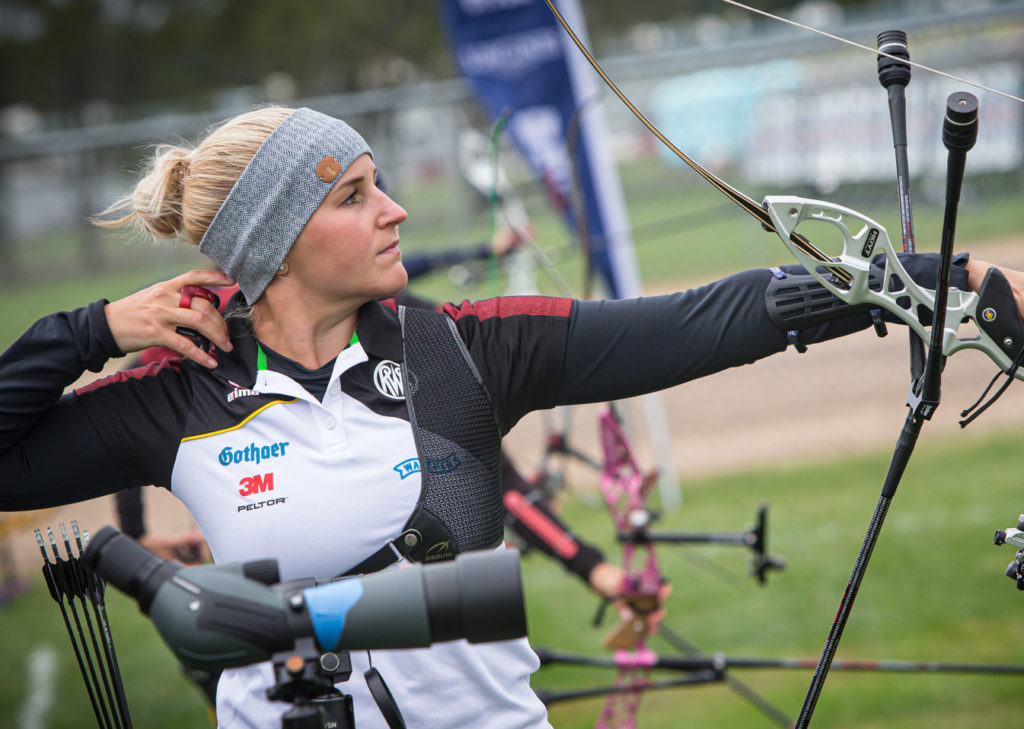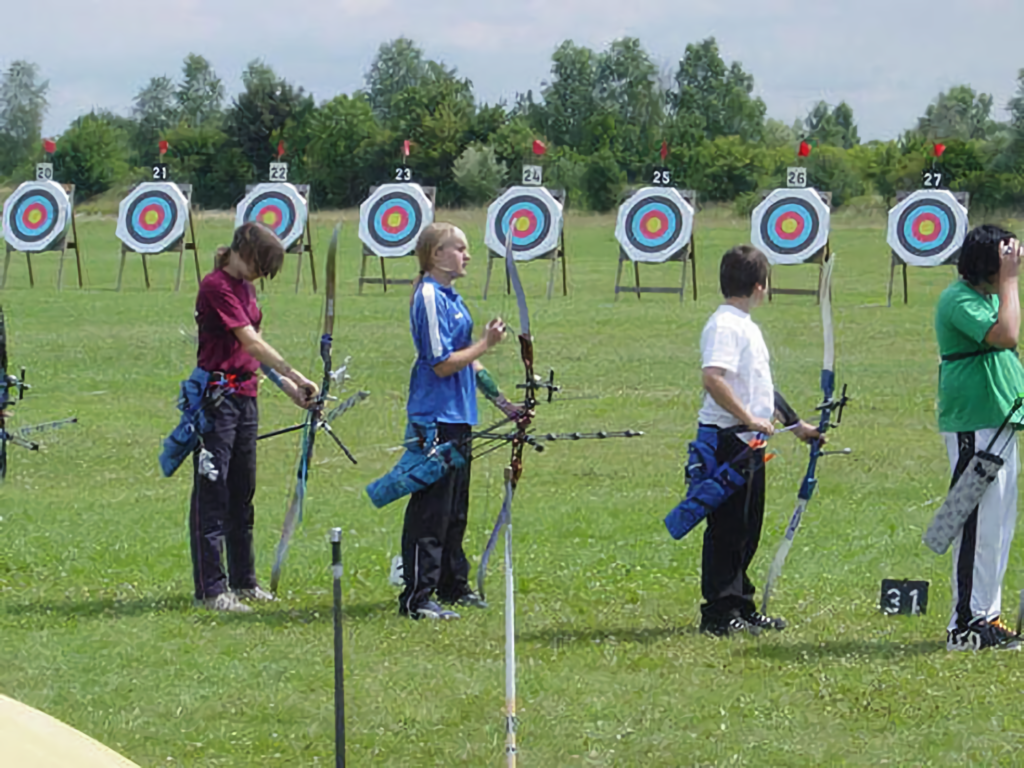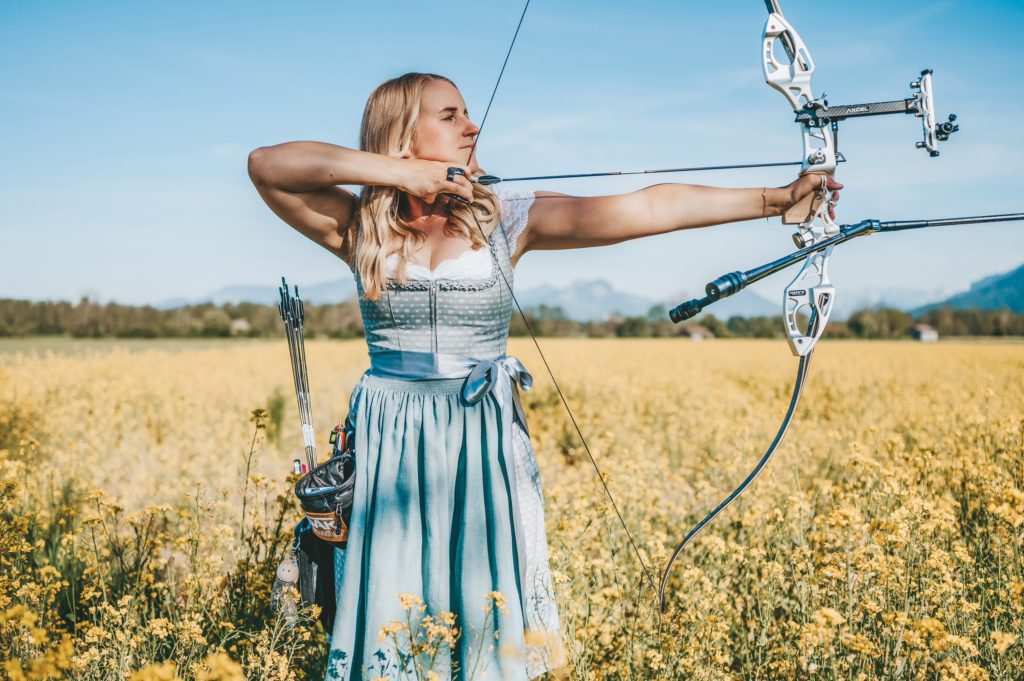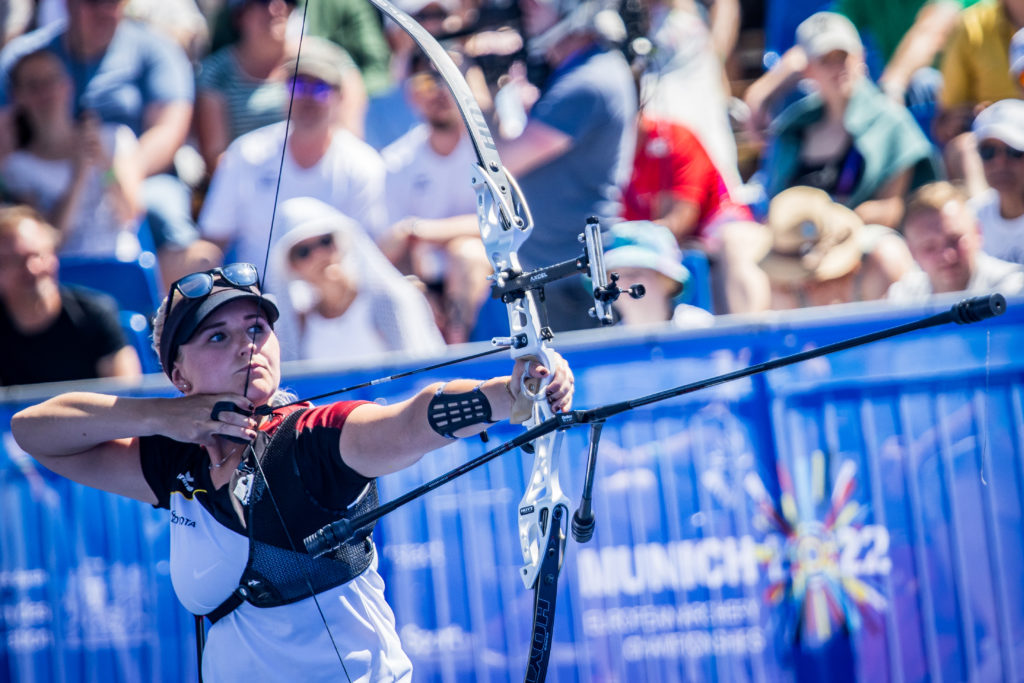Germany is emerging as a powerhouse force in European archery. Mimi Landström speaks to Kathi Bauer
Katharina Bauer has had an incredible start to the 2022 season, medalling at every international event she has attended so far. She won gold at the pre-season Spring Arrows tournament, then took individual bronze at the Antalya World Cup and the European Championships, along with team gold in Munich and mixed-team gold in Gwangju, part of a surge in German recurve talent that is seeing them at the business end of almost every major meet.
You’ve had an incredible start to the year. How did you prepare for it?
During the past few years I have increased my arrow volume a lot. I think that I am benefiting from that work now. I work a lot with our national head coach, Oliver Haidn, and he helped me to be perfectly prepared for all kinds of situations.
In winter, I just focused on shooting 70 metres for the first time. We spent many weeks in Belek in Turkey and at the Beiter Center to shoot under perfect circumstances. That helped me to stay in my routine and to stabilise my technique on the outdoor distance.
I built a little shooting cabin in our garden. This gives me the opportunity to shoot 70 metres in every condition, even when it is cold outside. Another change is that I have been training with a teammate (Moritz Wieser) since October 2021. He started studying near my home town, so we train together almost every day. Before, I was training by myself most of the time.
Which change made the biggest difference?
I think my shooting cabin has helped me the most. Not just because of the fact that I’m able to shoot 70 metres every day, but also because it makes my days much easier.
Next to archery I still have a regular job. I can work from home, but I always had to get ready for practice at another place, had to organise everything, had to pack everything and also I needed to drive there. This cost plenty of time every day, time I actually did not have because my days are already full. With my
cabin at home, I can start shooting 10 minutes after finishing work. That is perfect for me.
There has been a real renaissance in German recurve this year. Where has this come from and what do you think are the reasons for it?
Now, we are a young, dynamic and motivated team. We all worked really hard in recent years and I think we’re benefiting from that now. With Oliver Haidn and Marc Dellenbach, we have two really good coaches. We also have a super-supportive federation and a professional and big team of staff (like psychologists, physiotherapist, sport scientists, bow tuners etc).
Especially during the wintertime, we train really hard and we now shoot 70 metres all year long (before, we shot a lot of 18 metres, too). Furthermore, around four years ago we started to increase our arrow count.
In the wider world, the big boost for archery in Germany came in 2016 after Lisa Unruh won the silver medal in the Rio Olympic Games. This was the first time that German television ever showed archery. The views were insane and at that time many people and kids started to take up the sport. Tokyo was also a little renaissance but due to Covid there were still many restrictions in the local clubs, which made it more difficult to start archery at that time.
What does a typical week look like for you?
Normally I have five to six training days per week and I work on my regular job on four to five days, for five to eight hours. My working times depend on my weekly training schedule.
On a normal day, I shoot in the morning for two hours and in the afternoon for two to three hours. Usually I have one archery-only day per week. On this day I don’t have to work and can shoot all day long. Typically I meet up with my coach Oliver Haidn on this day. So, a ‘normal’ day might look like this:
- 8am-10am: shooting
- 10.30am-4pm: work
- 4.30pm-6.30pm: shooting
On five days a week I do additional training from 6.30pm to 7.30pm (strength, endurance, core).
How many arrows do you shoot a week?
When I am at home I shoot 1,250-1,500 arrows in a week. In training camps we normally shoot 2,000+ arrows per week. I do strength training, core training and cycling. I also work with a psychologist and I have physiotherapy regularly.
How do you fit in training with a job?
I’m really lucky to have a supportive and tolerant employer. I work in customer service for one of the biggest German health-insurance agencies. I have flexible working times so that I can combine them with my training sessions, and I’m also allowed to work from home.
When I am away from home for a longer time (training camps, competitions etc), my employer gets back some of the ‘lost earnings’ from Deutsche Sporthilfe, which is the foundation for athletes in Germany. That means I don’t have to use my regular holiday days for archery, so I can still go on a vacation after the season.
How do you keep your training focused?
I am always thinking that the training today will be the success of tomorrow. When I am in training I always shoot every arrow with 100%. That is what keeps me going and that is why I shoot every arrow with 100%.
For me, it’s also important to shoot a lot of arrows per week and also per day. To stay focused and also motivated over the day, I give myself little challenges. This means that I give myself the task of shooting all arrows in the yellow for three ends in a row. When I have done it, I am allowed to take a break!
Sometimes I also shoot on a smaller target face or I shoot with a timer in a higher or lower speed. This makes my training at home more challenging and it also shows me if my shot routines work during stressful situations.
You spend a lot of time away from home. how do you find that?
I love my home. I live in the south of Germany. We have a really nice natural environment. I love seeing my family and friends. Of course I miss my home and my people there while travelling, but at the moment I see representing my country all over the world as a privilege. Life is still long enough and I’m sure I will still have enough time to enjoy my home and everything there after my archery journey.
At the moment, I just want to do what I love, I want to take all these experiences all around the world and I want to enjoy the time with my teammates. I don’t have definite goals in results or rankings. I just want to improve my technique and my mental game in competition situations.
You missed out on the Tokyo Olympics – did that drive you to work harder and train harder to be where you are now?
When I didn’t make the team last year I was just really, really sad and disappointed. It hurt so much and at first I didn’t even want to talk about it with anyone.
I took some days off and reflected by myself. Slowly I started realising that I had kind of ‘lost’ myself and also the love for archery, because I did everything just for the Olympic Games. I totally forgot the real reason why I was doing archery: because I love doing it.
As soon as I realised that, I started to accept the situation. I accepted the fact that my road to Tokyo did not end with that pain – my road to Paris started with it.
Since that point I have enjoyed archery way more than ever before and I have much more fun in what I do. I also started to see every single competition as a chance and as a privilege. In fact, missing the Tokyo Olympics helped me to make a big step forward and made me much stronger.
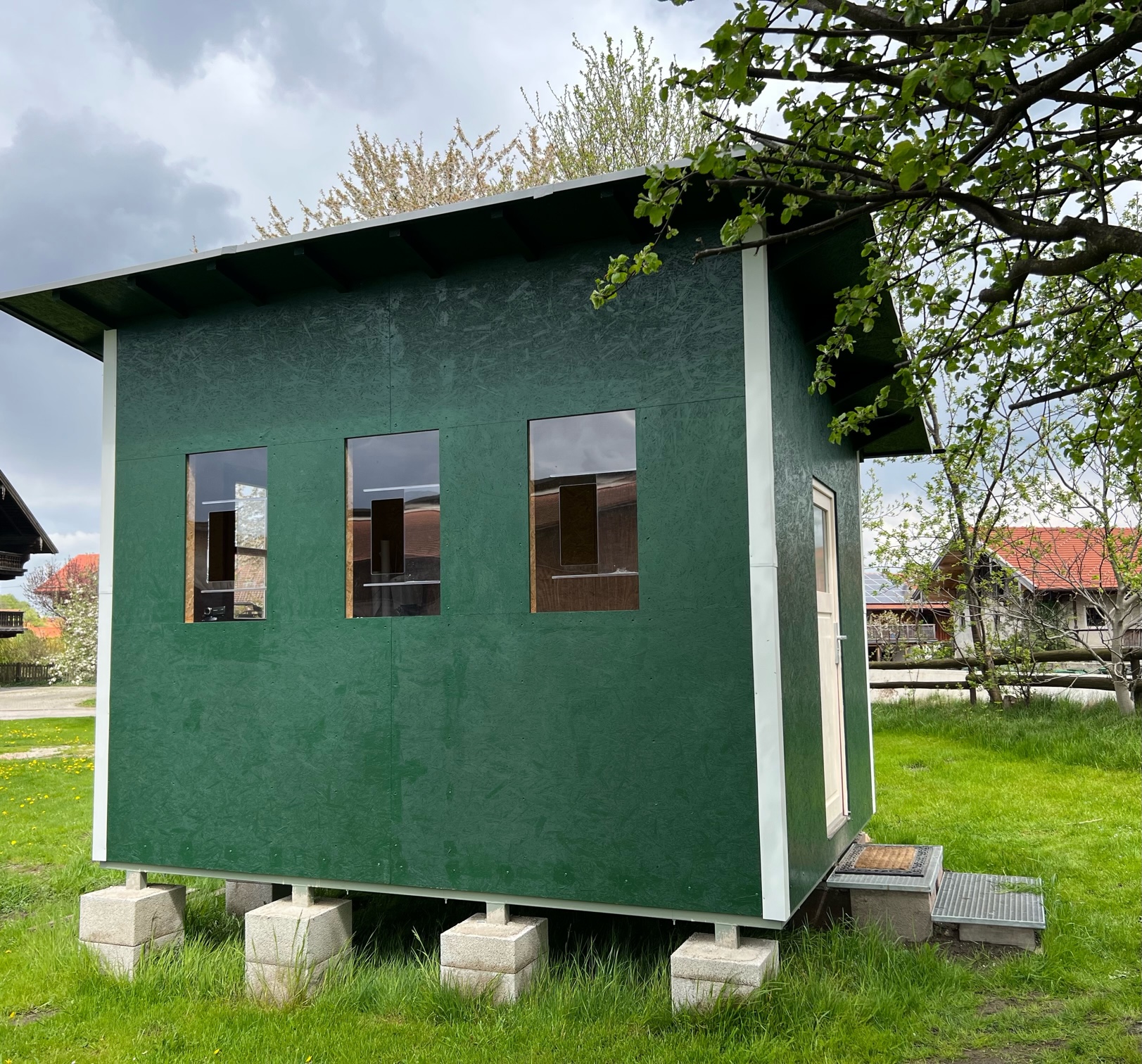
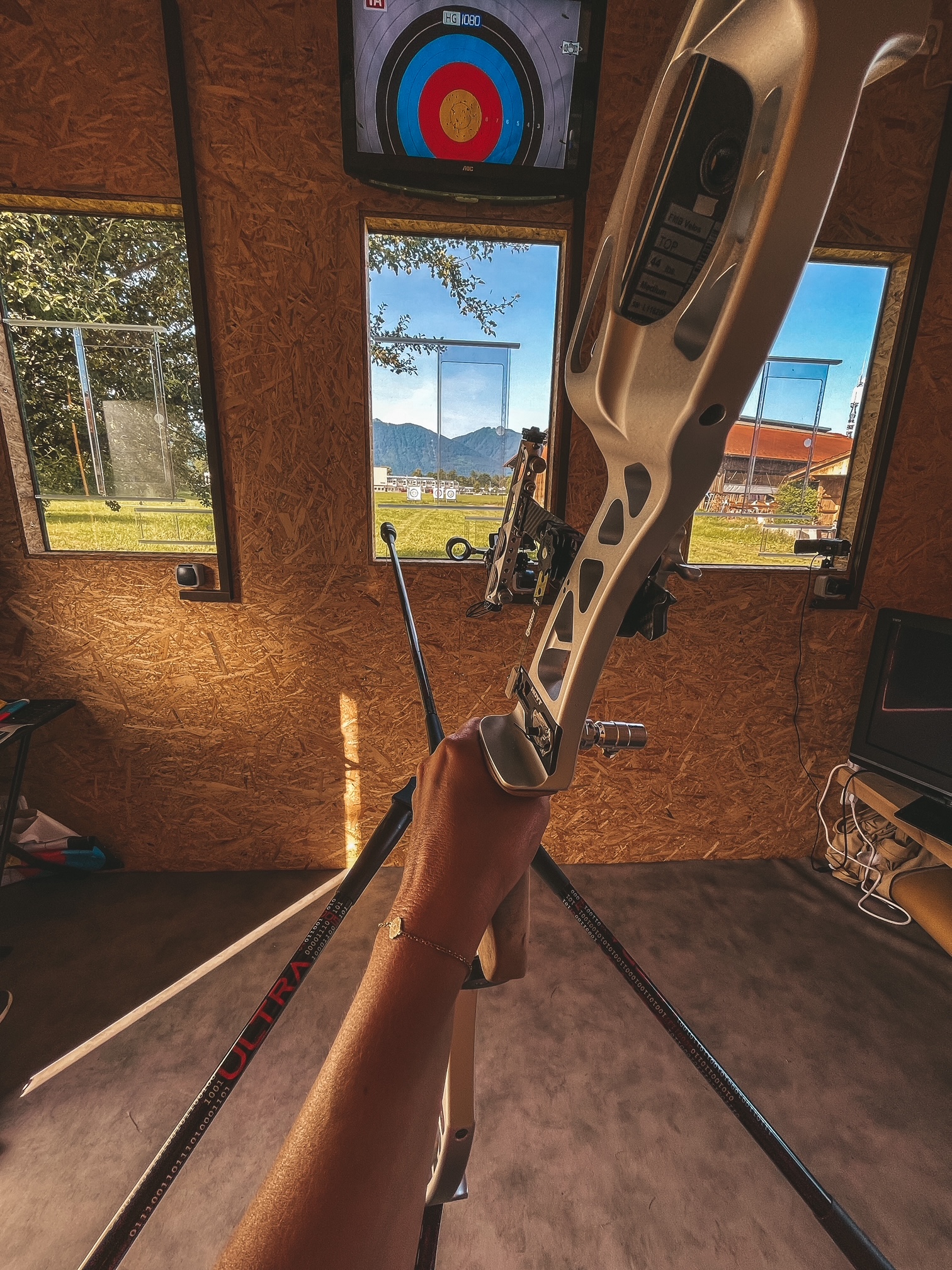
You have medalled at the first two World Cups – how does it feel?
It feels awesome. I worked really hard in the past few years and I was really unlucky in many situations. It is great to finally get some reward for many tears and hard days in the past.
Of course I was nervous before going into the finals stage. But in the days before, I tried to visualise everything. I thought about the surroundings, the feelings I would have and how I would shoot in there. This helped me to calm down my nerves, and to enjoy it.
Which finals field have you enjoyed most so far?
I enjoyed the finals field at the European Championships in Munich the most. Shooting in front of my home crowd, my family, my friends, my home club, etc was awesome. Winning an individual medal at the Europeans has always been a little dream for me. Winning it on home soil makes it even more special.
I’m sure that I will never forget that day and the atmosphere in the arena. It was the perfect end for my first senior European Championships.
What’s On Your Bow? Katharina Bauer
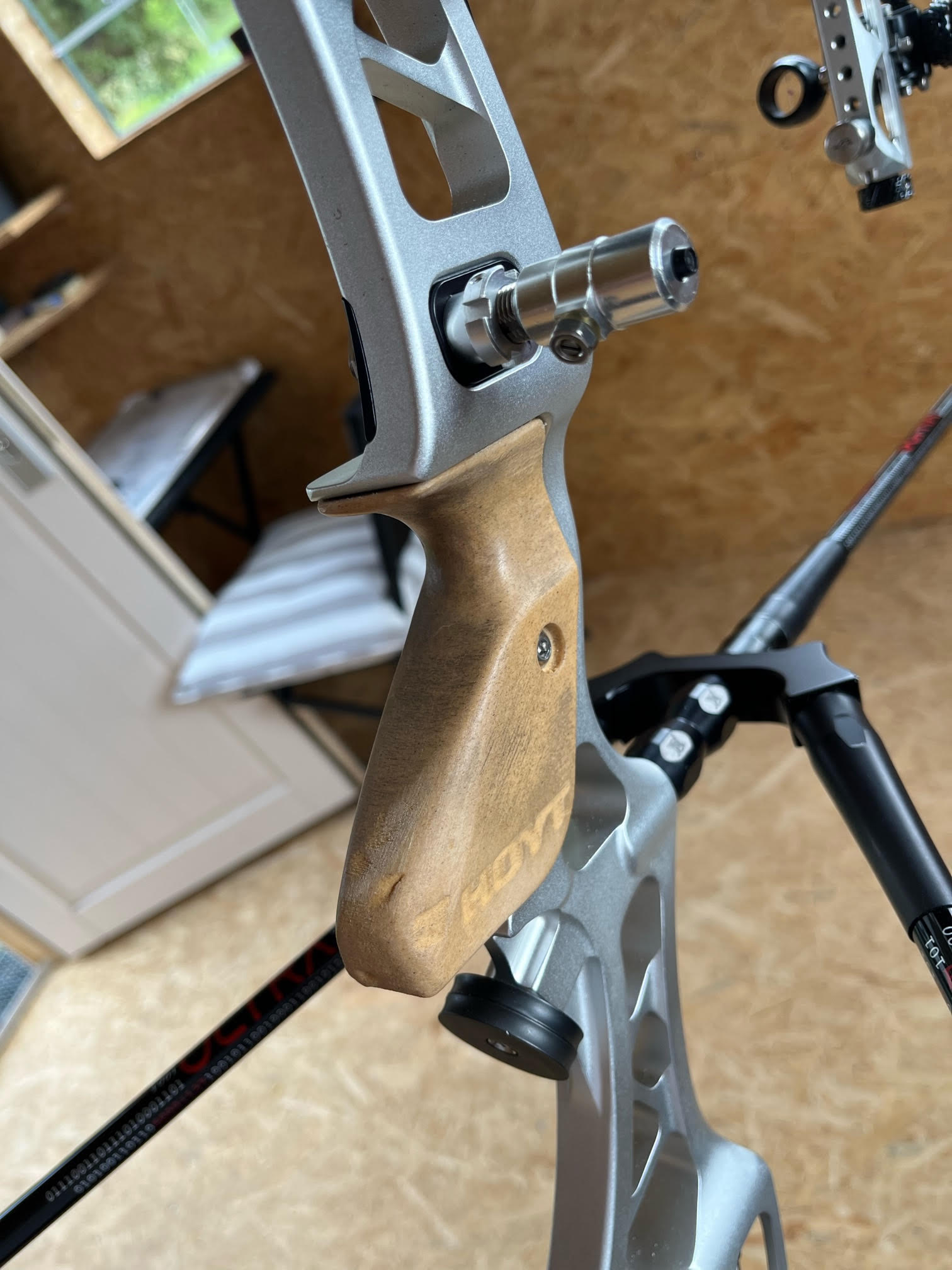
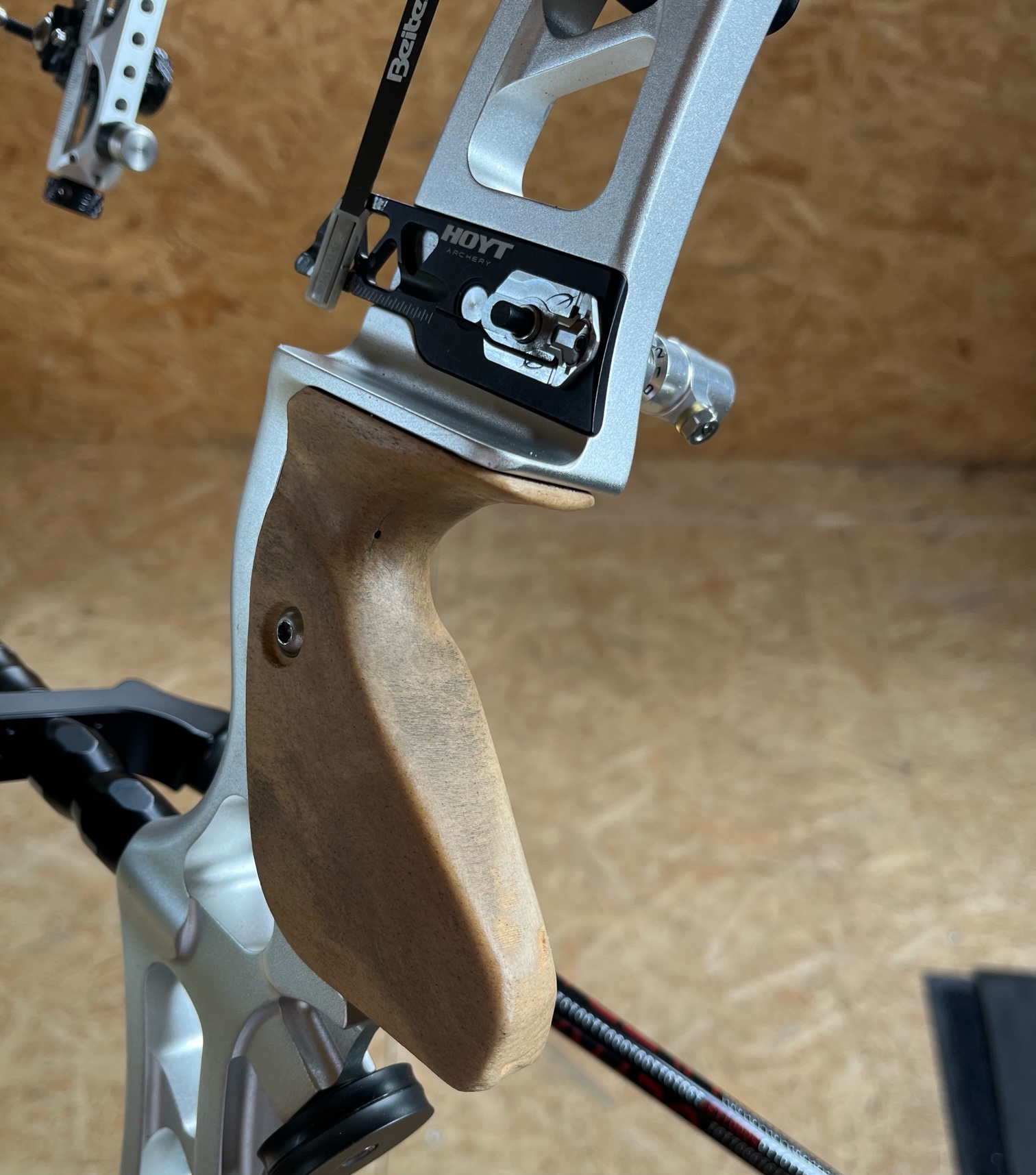
RISER: Hoyt Formula Xi, 25” in silver.
“I just love the design and the feeling of the Formula series.”
LIMBS: Hoyt Velos, 44lb in medium (42lb on the fingers).
“I’ve been shooting Hoyt limbs for 10 years now and the Velos are my favourites. Super smooth and super fast.”
SIGHT: Axcel Achieve XP.
“I use a self-made sight pin in it; it’s a very small pin, which helps me to aim more steadily.”
BUTTON: Beiter button, in silver.
STABILISERS: RamRods Ultra V3. The long rod is 30” with 9oz on the front. The short rods are 13.5” with 5oz on each.
“I like to shoot a long and heavy front stabiliser. My shot routine is quite fast and for that a longer rod helps me to stay steady and strong during expansion and the release. The bow just drops out of my hand while my body stays in a good, strong position. My V-bar is 70° wide and 17° down.
“Because of my fast shot, my bow has to be calm and steady from the beginning.
GRIP: “It’s 3D printed, and completely modified. I have really small hands. To get a more stable front arm I tried many different grips. At first I got a quite high one and I ground it down until I found the right position. After that we did a 3D print out of a plastic-wood-combination.”
CLICKER: Beiter Klicker plate in combination with the Beiter MicroKlicker.
STRING: BCY Spectra 652, 18 strands, made by Henning Lüpkemann (HL Customstrings).
TAB: Fairweather Modulus Tab – not modified.
ARROWS: Easton X10, 550 spine; spin wings 1 3/4” black; Easton Tungsten points, 100 grain; Beiter In Out nocks.


